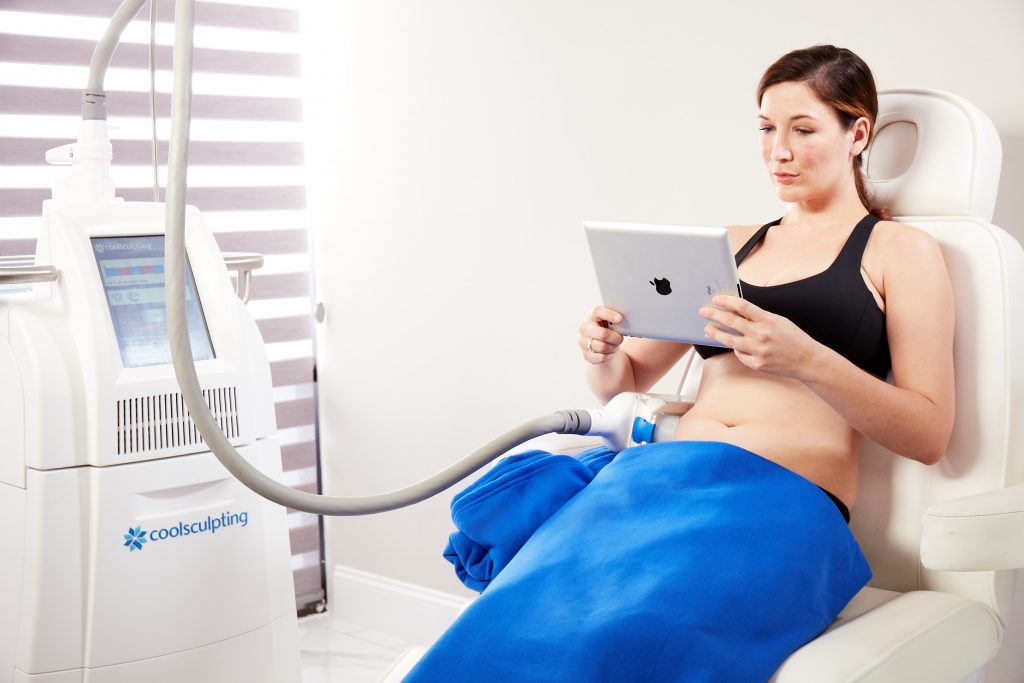We talk often about the benefits of CoolSculpting® for our Ann Arbor, MI, patients. But if you read celebrity news, you’ve probably heard about supermodel Linda Evangelista’s experience. After undergoing seven CoolSculpting treatments by a dermatologist, she developed paradoxical adipose hyperplasia (PAH).
What is paradoxical adipose hyperplasia?
PAH is a very rare side-effect of cryolipolysis–or CoolSculpting. It’s unknown what causes PAH to develop in a small percentage of patients (less than 1%). But in these patients, instead of fat cells breaking down and leaving the body, fat cells expand and become thicker. This rare occurrence is sometimes referred to as the “butter effect” because that area of fat cells takes the shape of a large stick of butter—the same shape as the applicator used to freeze the cells. Typically, an official diagnosis of PAH happens around 6 months after treatment when it’s evident that the area of fat is indeed growing larger, harder, and shaped like the applicator.
How common is paradoxical adipose hyperplasia?
Every patient that pursues any type of cosmetic treatment–whether surgical or non-surgical–should advocate on their own behalf to be informed of all possible side effects and all possible treatment options. While Evangelista’s outcome is unfortunate, it’s a good reminder that no procedure comes without at least a small amount of risk.
How do you reduce your risk of PAH?
There are several steps you can take to minimize your risk as you pursue fat reduction options.
- Receive your fat reduction treatment at a plastic surgery practice with board-certified plastic surgeons.
We say this often and we’re saying it again–only at a plastic surgery practice will you receive the full picture of all possible solutions for your specific challenges. You won’t be force-fed a treatment that isn’t right for you simply because we don’t offer other options.
- Consider all possible fat reduction treatments as you pursue your goals.
CoolSculpting still remains extremely safe and is effective for many people, as you can see below and in our patients’ before and after photos.
View this post on Instagram
In recent years we’ve also introduced a new minimally-invasive surgical treatment called BodyTite that many of our patients have found to be the right fit for them. Ultimately, liposuction still remains the gold standard for fat reduction. It comes with a longer recovery time than CoolSculpting or BodyTite, but our board-certified surgeons can see how much fat is being removed in real-time as they’re doing it to help ensure positive outcomes.
- Ask about all possible outcomes for any treatment.
Make sure you are fully informed about every possible outcome–even rare ones–so you can make an educated decision about what you feel is right. We’ve never had any of our patients experience PAH after their CoolSculpting treatments, but we make sure that our patients know that it is a possible outcome.
- PAH can be treated–and experienced plastic surgery offices know what to look for.
PAH resulting from CoolSculpting can be treated. The normal treatment for PAH is liposuction–a surgical procedure–which is another reason to receive your CoolSculpting treatment at a plastic surgery practice. In the rare event that you develop PAH, our team knows what to look for and our board-certified surgeons are qualified to treat it.
Call our plastic surgery office and med spa in Ann Arbor today at 734.712.2323 or request a consultation so we can discuss all your fat reduction options and whether CoolSculpting may be a good fit for you.


Leave a Reply